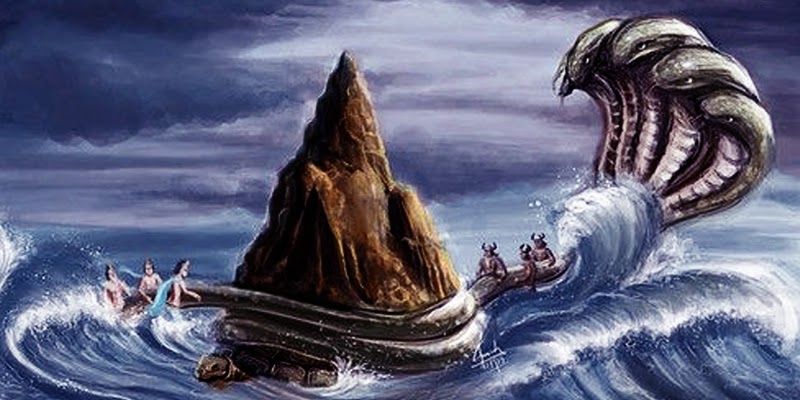
In Hinduism, various living beings such as symbolic animals are vehicles to the Gods, therefore they also have their own special meaning. In this connection special importance is given to the serpent (Dragon Devata).
Mantra Nava Naga (9 Dragon Gods) is also chanted to avoid and eliminate all kinds of bad consequences, curses and black magic. It also eliminates Naga Dosha, Kala Sarpa Dosha, Rahu Dosha and Ketu Dosha. Pregnant women can also chant this mantra to protect the fetus in the womb for the safe birth of a baby. This also eliminates Naga Dosha, Kala Sarpa Dosha, Rahu Dosha and Ketu Dosha. Pregnant women can also chant this mantra to protect the fetus in the womb for the safe birth of a baby.
The names of the 9 Devata Dragons: Ananta, Vasuki, Shesha, Padmanabha, Kambala, Shankhapala, Dhrutrashtra, Takshaka and Kalia -if prayed daily in the morning will make a person protected from all evils and help to be a winner in life.
The best day to start this mantra is on Purnima or Tuesday or Nag Panchami or panchami thithis or Amavasya day. Saying this mantra 11, 21, 108 or 1008 times will give you all kinds of spiritual power. Any mantra is generally recited facing east. Pray to Goddess Nageswari with Mimba leaves.
Strota Mantra Nava Naga
वासुकिं शेषं पद्मनाभं अनन्तं च कंबलं
शंखपालं धार्तराष्ट्रं तक्षकं कालियं तथा
एतानि नव नामानि नागानाम च महात्मनं
सायमकाले पठेन्नीत्यं प्रातक्काले विशेषतः
तस्य विषभयं नास्ति सर्वत्र विजयी भवेत
II इति श्री नवनागस्त्रोत्रं सम्पूर्णं II
anantaṃ vāsukiṃ fellow Padmanabham ca kaṃbalaṃ
śaṃkhapālaṃ dhārtarāṣṭraṃ takṣakaṃ kāliyaṃ Katha
farmers ava Navami agananca ṃahatmana
Sayam Patenityam Prathahkāle Sarvemtrajaita
About the Dragon
yadā sarve pramucyante kāmā ye 'sya hṛdi śritāḥ |atha martyo 'mṛto bhavaty atra brahma samaśnuta iti |tad yathāhinirlvayanī valmīke mṛtā pratyastā śayīta |evam evedaṃ śarīraṃ śete | athāyam aśarīro 'mṛtaḥ prāṇo brahmaiva teja eva |so 'haṃ bhagavate sahasraṃ dadāmīti hovāca janako vaidehaḥ ||Like the skin of a Snake, dead and discarded, lying on the ant-hill, also lies its body; but what is without a body, immortal and living, is pure Brahmana, is pure light.
Symbolism of the Snake
The Worship of the Serpent (Dragon) in the Vedic Text
ye antarikṣe ye divi tebhyaḥ sarpebhyo namaḥ //ya iṣavo yātudhānānāṃ ye vanaspatīnām /ye 'vaṭeṣu śerate tebhyaḥ sarpebhyo namaḥ //ye amī rocane divo ye vā sūryasya raśmiṣu /ye apsu ṣadāṃsi cakrire tebhyaḥ sarpebhyo namaḥ /
Idam sarpebhyo havirastu-justa |Asresa yesa manuyanti chetah ||



